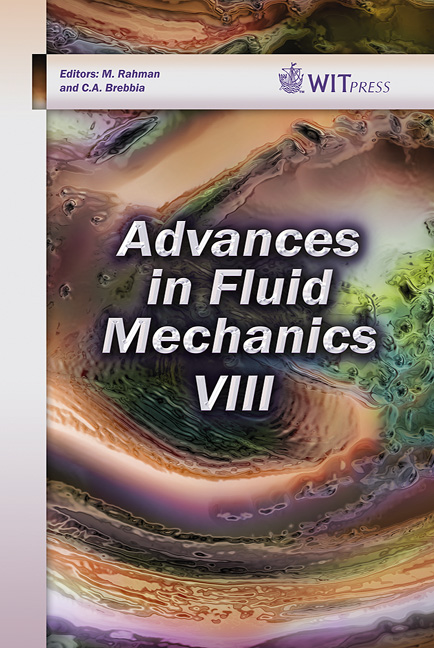Peculiarities Of Hydrodynamics In The Evaporation Of Hydrocarbon Droplets
Price
Free (open access)
Transaction
Volume
69
Pages
10
Page Range
283 - 292
Published
2010
Size
2,931 kb
Paper DOI
10.2495/AFM100241
Copyright
WIT Press
Author(s)
G. Miliauskas, S. Sinkunas, J. Talubinskas & K. Sinkunas
Abstract
Combustion of liquid fuel generally is going on in the sprayed form. The combustion effectiveness is influenced by the evaporation rate of droplets, which determine heat and mass transfer intensity between droplets and the gas and peculiarities of combined heat spread in warming semitransparent droplets. Modeling of complex heat transfer raises the assessment problem of the potential liquid instability within droplets. Free liquid circulation in warming liquid droplets can occur under the influence of Archimedes forces and forced circulation inside them can be forced by sliding gas friction forces acting on the droplet surface. Under the influence of these forces, droplets liquid starts to flow on its surface and emerged vortices pass into the interior layers of the droplets. Hydrodynamic regime of the liquid droplets determines the solution methodology of the inner \“droplet” problem. A combined analytical and numerical method of investigation is applied. A system of parabolic type second order integral-differential equations describing complex heat transfer in the droplet by conduction and radiation is transformed into an infinite series of integral equations. Securing balance of energy fluxes in the droplet with confidence of one hundredth of percent and using the fastest sinking the droplet surface temperature is selected. The change of thermal state and phase transformation intensity of warming hydrocarbons droplets heated in air is modeled under different boundary conditions of heat and mass transfer. The influence of forced liquid circulation on the droplet thermal state evaluated using effective heat conduction coefficient. Free liquid circulation in the droplets is evaluated by Rayleigh number. Keywords: hydrocarbon droplets, combined heat and mass transfer, heating and evaporation of droplets, hydrodynamics.
Keywords
hydrocarbon droplets, combined heat and mass transfer, heating and evaporation of droplets, hydrodynamics





